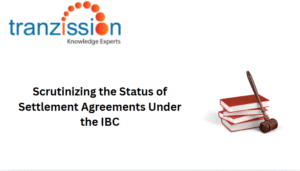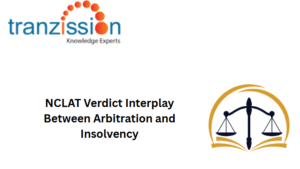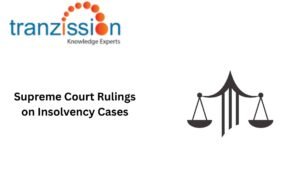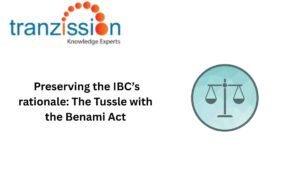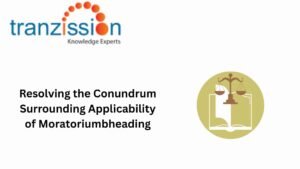
How to file an insolvency petition
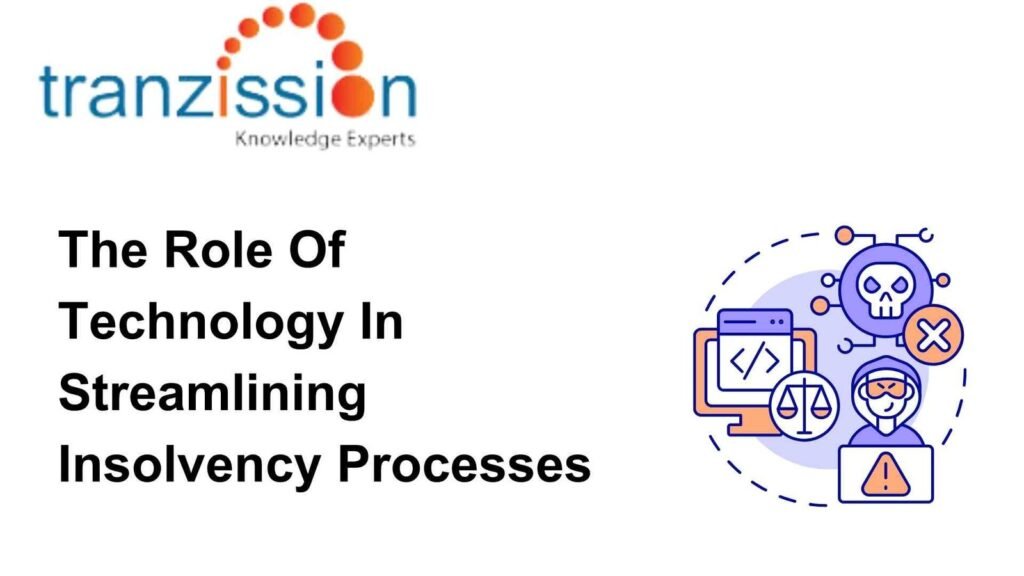
Table of Contents
One may face ‘insolvency’ when they are unable to pay debts due to a lack of cash flow. It is a situation where the assets of an individual or a corporate entity do not meet its liabilities and have to repay its creditors. An individual or a corporate entity files an insolvency petition to initiate the corporate insolvency resolution process (CIRP). The application process of the petition is governed by the Insolvency and Bankruptcy Code, 2016, (IBC) and the Insolvency and Bankruptcy (Application to Adjudicating Authority) Rules, 2016 (hereon forward known as the ‘Rules, 2016’).
Who Can File an Insolvency Petition?
The corporate debtor, its operational creditor or financial creditor, the personal guarantor of the corporate debtor, or individuals and partnerships can file for an insolvency petition:
- Corporate debtor: The corporate debtor under section 10 can file a petition with the NCLT if they have defaulted on its debts.
- Financial creditor: The financial creditor is an individual or entity to whom any financial debt is owed, and makes an application to initiate the CIRP under section 7.
- Operational creditor: As per section 9, the operational creditor can make an application to initiate the CIRP against the corporate debtor.
- Personal guarantor: The personal guarantor of a corporate debtor can apply to the NCLT for the resolution process under section 94 of IBC, seeking relief from creditors.
- Individuals and partnerships: The minimum default of the debtor to file for insolvency is Rs, 1,000. Under section 95 of IBC, individuals or a partnership firm can apply to initiate the insolvency resolution process.
When can the Individual file for an Insolvency Petition?
The individual can file for an insolvency petition in two situations:
- The individual can file an insolvency petition for the ‘fresh start process’ under section 80 of IBC. This process is for individuals with a minimal income to ‘save’ themselves without going through the CIRP, subject to the criteria given under section 80(2), such as their gross annual income of the debtor is not more than Rs. 60,000, an aggregate value of debtor’s assets does not exceed Rs. 20,000, their aggregate value of the qualifying debts does not exceed Rs. 35,000, he is not an undischarged bankrupt, does not own a dwelling unit, and a fresh start process, insolvency resolution process, or bankrupt process is not against him.
- An individual can file for an insolvency resolution process under section 94 when they commit a default or are unable to pay their debts.
When can the Creditor file for an Insolvency Petition?
The creditor files for an insolvency petition against the debtor when they are owed a debt:
The financial creditor or operational creditor files for an insolvency petition when there is a default on financial debt. The minimum default is Rs. 1 crore for initiating the CIRP under Part II of the IBC.
What are the roles of creditors and debtors in the process?
The role of creditors during this process is to initiate the CIRP to recover debts that the corporate debtor owes them. The Committee of Creditors (CoC), which consists of the financial creditors, means that the creditors also have an important role in the resolution plan. The debtors can also initiate the insolvency process. The process must remain fair and transparent, hence, the debtor has the role of providing information and documents to the resolution professional and disclosing any past transactions that may be preferential or fraudulent.
Where to file the Insolvency Petition?
Under the CIRP is filed before the Adjudicating Authority, which is the NCLT, in the territorial jurisdiction where the debtor resides or where the business is located. An individual or partnership initiating a ‘fresh start process’ should file an insolvency petition with the Debt Recovery Tribunals. Read related article The Role Of Technology In Streamlining Insolvency Processes.
What are the grounds for filing an insolvency petition?
The grounds for filing an insolvency petition are:
- The debtor has a default in payment which means that an individual or corporate debtor has not been able to repay their debts within time.
- The debtor has not been able to pay their liabilities, due to which they are facing financial distress.
- The creditor, financial or operational, can also file an insolvency petition if the debtor owes them any liability or obligation regarding a claim.
Step-by-Step Guide to Filing an Insolvency Petition
Step 1: Assess the Financial Situation
The first step is to check the eligibility of the corporate debtor and its financial creditors and/ or operational creditors. This means that the minimum default criteria should be met before initiating the CIRP. Further, if the application is submitted, assessing the financial situation becomes important to determine the current financial situation of the debtor and how the CIRP is going to be conducted.
Step 2: Determine the Type of Petition
The type of petition is dependent on the stakeholder who files it. As per the provisions of the IBC, an insolvency petition can be filed by the financial creditor, operational creditor, or corporate debtor: The financial creditor can file an application under section 7 of IBC in Form 1 of the Rules, the operational creditor can make an application as per section 9 of the IBC and Form 5 of the Rules, and the corporate applicant can make an application to initiate the CIRP under section 10 of IBC in Form 6 of the Rules.
Step 3: Prepare the insolvency petition
There are several documents that the debtor or the creditors have to submit along with their application, such as their name and address, a list of creditors, financial statements, and other relevant documents.
Step 4: Filing the insolvency petition
The application will be submitted with the NCLT along with the prescribed fees which are dependent on the financial situation of the debtor, the debts, loans, or other obligations that are owed to the creditors, etc. The NCLT may admit the petition and pass an order to initiate the process. The date of the order is known as the insolvency commencement date.
Step 5: Serve Notice to Creditors
If the NCLT passes an order to initiate the CIRP, it must direct the IRP to send a notice to the creditors about the insolvency proceedings.
What Happens After Filing?
Once the insolvency petition is filed the steps that follow are:
- The NCLT declares a moratorium, makes a public announcement that the creditor’s claims have to be submitted to the resolution professional,, and appoints an interim resolution professional (IRP).
- Once the IRP verifies the claims, the CoC is formed by the IRP. The IRP drafts an information memorandum which consists of the debtor’s financial status.
- The resolution applicant must submit a resolution plan to the IRP. The CoC then must either reject or approve the resolution plan with a 66% voting share of the financial creditors.
- If approved, the resolution plan will then be submitted to the NCLT. If the NCLT approves the resolution plan, it becomes binding on the stakeholders. If not then the liquidation process is initiated.
- Section 12 mandates that the CIRP must be concluded within 180 days from the insolvency date. The resolution professional can apply to the NCLT to extend the period if instructed by the CoC to do so. If satisfied with the reasons for requesting this extension, the NCLT can pass an order to extend the duration of the process beyond 180 days. However, this extension period cannot be more than 90 days and cannot be granted more than once.
What are common challenges and considerations?
As seen, it is important to
- Following the steps of the CIRP and adhering to the strict timelines, while complying with IBC and related rules and regulations, is complex. Having a lawyer or professional assistance is required to guide you through this process.
- Whether you are a debtor or a creditor, there are numerous documents and information that have to be submitted, which may be difficult to collect and keep track of.
- If the petition is admitted the debtor can challenge the order of the NCLT, arguing that there was no default. Having a lawyer or professional may help to know how to file an appeal to challenge the order or to know about any alternative remedies that may be available.
- Also, the disputes between the corporate debtor and its stakeholders require a professional who knows the compliance requirements and financial skills to resolve the issue.
Hence, appointing a legal counsel and professional assistance will be beneficial to navigate these challenges for expert guidance, strategic planning, documentation, mitigation of risk, and legal representation.
Conclusion
An insolvency petition is filed when a person is unable to pay his debts. The insolvency law provides such a person the possibility of saving his company and starting his business with a clean slate while protecting him from his creditors. This process is complex, and requires strict adherence to IBC, rules, and regulations, with documents and information that need to be submitted at various stages to different authorities. It becomes important to have legal counsel and professional assistance to complete the resolution process with ease, complying with the statutory requirements, and with the necessary financial, legal, negotiation, and advisory skills.

